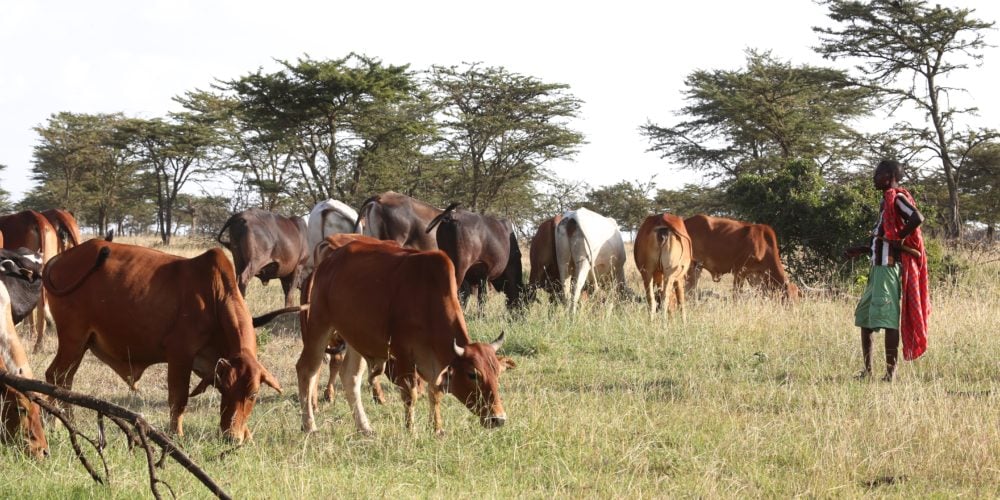
Minorities and indigenous peoples at the frontline of climate change
We all know this trendy little thing called climate change. We read the articles, go to the Fridays for Future strikes and sometimes even bring a reusable cup for our Pressbyrån coffee. We know what is wrong, how it happened and pretty much what efforts needs to be made. But are we really aware of its practical consequences? Often we do not consider those who already live with the changes, those who are hit the hardest: the minority and indigenous communities all around the globe. Widespread discrimination and government neglect is just a few of the reasons why this issue is not highlighted enough. It is time that we recognize the important role minority and indigenous communities play in preserving nature.
‘These days we go to the forest with hunger, and return bringing more hunger’. This is the testimony of a Shawi community member, shared in the Minority Rights Group’s Minority and Indigenous Trends Report 2019. The Shawi is an indigenous group, resident in 19 communities in the northern Peruvian Amazon, is one of the groups living with the vast consequences of climate change. Threats do not only take form in depletion, deforestation and discrimination, but also in the changing flora and fauna. In one of the most biodiverse areas in the world malnutrition and food security threatens the existence of entire communities. Development projects conducted by the government, such as large scale road constructions, are introducing new populations, including competing and more expensive traders who import less nutritious food and more alcoholic beverages. Construction projects also risk scaring away animals from the area. These are all effects of neglective development projects, not only hindering development but also the livelihood of the Shawi indigenous communities. This is not the only case where government efforts have dangerous side effects.
In Kenya the Sengwer indigenous group has historically been resident in, taken care of and protected the Embobut Forest. Now the government is accusing the group of illegal deforestation and hindering sustainability, in the name of green preservation projects. However, the Sengwer are completely dependent on the continued wellbeing of their ancestral forest and its fruitfulness. Not only are they familiar with the patterns and needs of the forest, they have close cultural connections to it, connections colouring their traditions and lifestyle. The Sengwer are facing violent evictions with thousands of homes burnt down, all because of ‘green preservation efforts’ funded by the European Union and the International Monetary Fund amongst others. The evictions cause terrible physical and psychological traumas as well as socio-economic burdens and long-lasting threats to the community’s traditions. It also affects ‘family’ as an institution and elevates challenges for women and girls. UN rapporteurs calling for the Kenyan government to immediately halt the evictions had the EU cut off all funding. Unfortunately this is the true human cost of many large-scale, donor funded top-down projects. Decisions, sometimes life changing or life threatening, are made for indigenous people without their involvement or approval.
A third example is the indigenous pastoralists in Tibet. The Tibetan Plateau, an area the size of Western Europe, is melting. Climate change has drastic effects on the land and the nomadic indigenous groups has diverging approaches to its preservation from those of the Chinese government. The Chinese government is largely dependent on water provision from Tibet, since China lacks water industries of that scale. Hence, major natural parks are built and protected by the government, favouring grass and water over local population. Landscapes and grasslands traditionally serving as paths for nomads and their cattle, constantly on the move to not overuse and exhaust its resources, are now unavailable due to environmental conservation projects. Compulsory fencing and enforced stocking ratios limits the pastoralist system and indigenous traditions. Human rights activists and international media monitoring is rarely seen in the area and the testimonies of the Tibetan nomads rarely heard.
All of this is happening whilst there is an increasingly hostile political climate growing worldwide. Right-wing extremism, xenophobia and stringent border policies does not seem that radical anymore. There is a growing fear, enhanced by populist parties’ for political gain. As the previous testimonies show, just three examples out of many, certain vulnerable areas are becoming uninhabitable due to climate change. The willingness to migrate is not only understandable, but inevitable if there is no sufficient support mechanisms in place. Migration has close ties to social, cultural and economic factors but research shows that environmental factors play an increasingly important role as well. Parallel to this, constructive discussion regarding migration is extremely rare, hence the stigma lasts. We are well aware of the fact that climate refuge is a growing phenomenon, but we seem so unwilling to prepare for it in a humane way.
This is the real, ongoing situation of climate change. The dramatic changes will continue. Climate change will not adapt to any intersectional risk analysis before striking. Disasters discriminate. As scary and frustrating as this is, there is also hope. We know, so we can change. We need to include minorities in climate related efforts. We need to trust them, their knowledge and understanding, in order to understand the needs of the nature. We need their help to combat, or at least adapt to, climate change. It is a responsibility we should not put on anyone, especially not the most vulnerable in society. But by helping indigenous and minority communities sustain their normal, traditional and peaceful livelihood we are doing everyone, including our dear mother nature we speak so highly of but seem to care so little about, a favour.
—
By Cornelia Fransson, Communications and Research Intern at MRG
This article was first published in Uttryck Magazine.
Read our full Minority and Indigenous Trends report on climate justice.